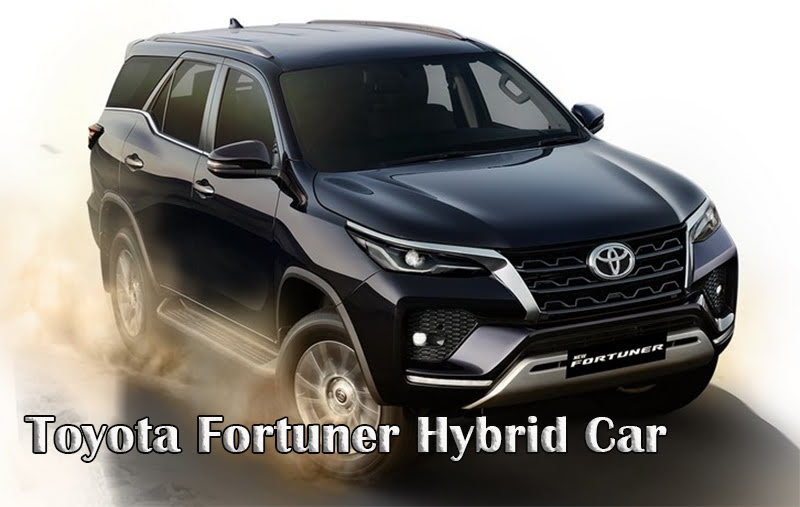Alright, so you know the Toyota Fortuner, right? That big, burly SUV that looks like it could survive an apocalypse and still get you to your cousin’s wedding in Manali? Well, Toyota finally gave it a bit of a tech upgrade in 2025 — and yes, it now comes with hybrid tech. Kind of. It’s a *mild-hybrid*, which is fancy talk for: “We added a battery, but don’t expect Tesla-level wizardry.”
Toyota Fortuner Hybrid Car
If you’ve been a fan of the Toyota Fortuner—like, the kind who admires it from every angle in traffic or dreams of taking it on a wild road trip—you’re gonna want to hear this. The big guy’s back in 2025 with a *mild-hybrid* twist. Yup, Toyota’s finally dipped its toes into the hybrid game with the Fortuner. But let’s set expectations straight—this isn’t some Prius-level wizardry. It’s more of a gentle nudge toward better fuel efficiency without messing with the Fortuner’s rugged soul.
Also Check:- Hero Lectro H5 Electric Cycle
Design: Still a Beast, Just Dressed Better
Visually, the Fortuner hasn’t gone through a midlife crisis or anything. It still looks like it could win a fistfight with a mountain, but now it’s cleaned up for date night. You get a blacked-out grille that means business, sleeker LED headlights with crisp DRLs (finally), and restyled bumpers that make the whole thing look wider and meaner. Plus, new 18-inch alloys? Yes please.
They’ve even added dual-tone paint options, which—let’s be honest—might just be Toyota’s way of saying, “We see you, Mahindra Scorpio-N.” Oh, and there’s a little ‘Neo Drive’ badge so everyone knows you’re rolling with hybrid tech. Subtle flex.
Interior: Familiar But More Polished
Inside, it’s still very much a Fortuner—which is to say, sturdy and spacious—but with just enough premium thrown in to keep up with the times. Dual-tone leather seats (actually comfy this time), softer materials on the dash, and a generally more refined vibe. Not a total luxury makeover, but enough to make long drives feel a bit more first-class than budget economy.
Engine & Hybrid Setup: Diesel Meets Electricity (Sort Of)
Now here’s the interesting bit: Toyota didn’t ditch diesel (phew), but they did add a 48V mild-hybrid system to the tried-and-tested 2.8L turbo-diesel engine. You’re still getting a hearty 204 horsepower and 500 Nm of torque, so towing your buddy’s broken-down Thar? Still no problem.
The hybrid part isn’t flashy—no EV-only driving or magic carpet ride here. But the belt-integrated starter generator gives you smoother take-offs, a bit of electric assistance when overtaking, and some energy recuperation when braking. Basically, it’s like giving your diesel engine a quiet little coach whispering, “You got this, buddy.”
Also Check:- Patanjali E-Cycle
Mileage: Actually Better—Not Just Marketing Speak
This is where things genuinely improve. Toyota says the mild-hybrid setup bumps mileage to about 15-16 kmpl in regular driving, and you could see up to 18 kmpl on highways if you’re light on the throttle (no promises if you’re flooring it every time the light turns green).
Compare that to the old diesel’s 13-14 kmpl, and yeah, that’s a solid 10-15% improvement. Not life-changing, but hey, fewer fuel stops on your Ladakh trip? Always a win.
Features: It’s About Time, Toyota
So, let’s talk goodies. You finally get a proper 10.1-inch touchscreen with wireless Android Auto and Apple CarPlay (it’s 2025, thank you very much). Higher trims also throw in a premium JBL sound system, ventilated seats, dual-zone climate control, and a powered driver’s seat that doesn’t make you feel like you’re in a taxi from 2012.
Safety? Toyota stepped it up here. Seven airbags come standard. You also get the full Safety Sense suite on higher variants—360-degree camera, adaptive cruise control, lane departure alert, blind-spot monitoring, the works. Basically, it’ll help you avoid doing something dumb when you’re tired after a long road trip.
Also Check:- Bajaj Chetak 3503 Electric Scooter
Price: Gonna Sting a Bit
Alright, here’s where your wallet starts to sweat. The base model for the hybrid lineup starts around ₹44.72 lakh (ex-showroom) for the 4×4 AT Neo Drive. And if you’re going full baller with the Legender or GR-S versions, be ready to shell out up to ₹51.94 lakh.
That’s about ₹2 lakh more than the non-hybrid versions. But you’re getting better mileage, a smoother drive, and updated tech, so… maybe worth it? Depends how often you hit the highway or how much you value that quiet, eco-friendlier conscience.
Final Thoughts: Should You Go Hybrid?
If you already own a diesel Fortuner from the last couple of years, the hybrid might not be a must-upgrade. But if you’ve been holding out for something more refined and future-proof, this mild-hybrid Fortuner hits a sweet spot. It keeps everything we love—the size, the power, the don’t-mess-with-me attitude—while smoothing out some of the rougher edges.
It’s not revolutionary. But it’s smart, subtle, and feels like Toyota finally decided to show up in 2025 instead of hanging back in 2017. And that’s something.
So yeah, would I buy it? If I had 50 lakhs burning a hole in my pocket and wanted a diesel SUV that doesn’t feel like a truck from a decade ago? Absolutely.
